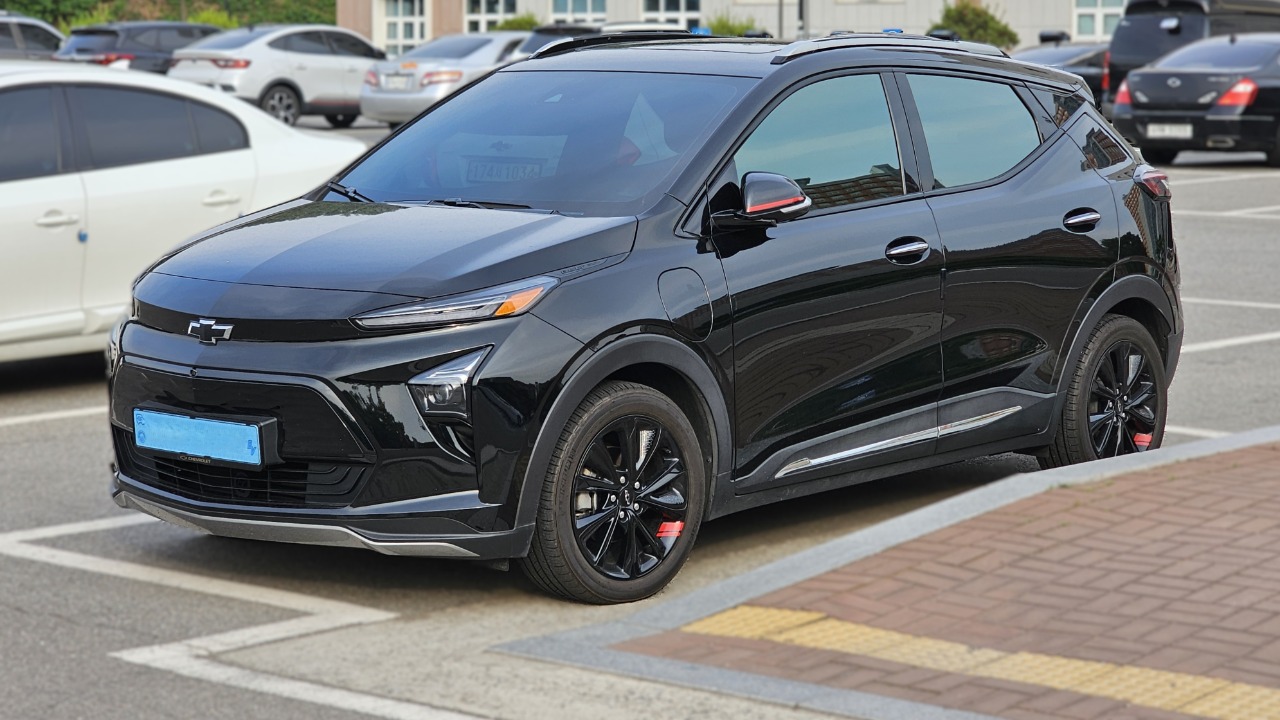
General Motors (GM) has announced its ambitious plan to phase out gasoline-powered Silverados by 2035, marking a significant step in its journey towards a sustainable future. This decision aligns with GM’s broader commitment to eliminate tailpipe emissions and achieve carbon neutrality by 2040. The shift promises to reshape the automotive landscape and redefine consumer experiences with one of America’s most popular trucks.
The Road to Electrification

GM’s electrification strategy is a multi-faceted approach aimed at transitioning its entire fleet to electric vehicles. The company’s commitment to eliminate tailpipe emissions by 2035 represents both a technological and cultural shift within the company. Key milestones leading up to this goal include the launch of new electric models, such as the GMC Hummer EV and the Chevrolet Bolt EUV, which are designed to showcase GM’s latest advances in EV technology. The 2025 goal of introducing 30 new global electric vehicles is another crucial step, underscoring the company’s dedication to this transformative process.
Technological advancements serve as the backbone of GM’s electrification efforts. The company is investing heavily in battery technology, focusing on innovations that enhance energy density, reduce costs, and improve vehicle range. GM’s Ultium battery platform exemplifies these advancements, offering flexibility and scalability for various vehicle types. Alongside battery improvements, electric powertrains are being optimized for performance and efficiency, ensuring that future electric Silverados deliver the power and durability that consumers expect from this iconic model.
Building a robust charging infrastructure remains a significant challenge for GM and the wider automotive industry. The transition to electric vehicles necessitates a comprehensive network of charging stations to support widespread adoption. GM is actively working on partnerships with governments and private entities to expand charging availability. Moreover, the company is exploring innovative solutions, such as integrating charging capabilities into existing infrastructure like parking lots and residential areas, to enhance accessibility and convenience for consumers.
Impact on the Automotive Industry

GM’s bold move is likely to create ripple effects across the automotive industry, compelling competitors to reassess and potentially accelerate their own electrification strategies. As one of the largest automakers in the world, GM’s decision to phase out gasoline engines by 2035 sets a precedent that other manufacturers may feel pressured to follow. This shift towards electric vehicles could lead to an industry-wide transformation, with companies racing to innovate and capture market share in the growing EV sector.
The transition to electric vehicles will necessitate significant changes in the automotive supply chain. Manufacturing processes will need to adapt to accommodate new technologies, and supplier relationships will evolve as demand for traditional components, like internal combustion engines, declines. Suppliers will be challenged to pivot towards producing electric powertrain components and advanced battery systems. These transformations will require substantial investment in research and development, as well as workforce retraining to equip employees with the skills needed for the electric future.
The economic implications of GM’s shift are complex, with potential impacts both positive and negative. On one hand, the growth of the electric vehicle market could create new job opportunities in manufacturing, research, and infrastructure development. On the other hand, there may be job losses in sectors tied to traditional automotive manufacturing and maintenance. As the industry adapts, it will be crucial to manage these transitions carefully to mitigate adverse effects on workers and communities reliant on the automotive sector.
Environmental Benefits and Challenges

The phase-out of gasoline-powered Silverados is expected to significantly reduce greenhouse gas emissions, contributing to GM’s goal of achieving carbon neutrality by 2040. Electric vehicles produce no tailpipe emissions, which can lead to cleaner air and lower pollution levels in urban areas. This shift aligns with global efforts to combat climate change by reducing reliance on fossil fuels and minimizing environmental impact.
While electric vehicles offer environmental benefits, they also present challenges related to battery production and disposal. The extraction of raw materials for batteries, such as lithium and cobalt, can have significant environmental and social impacts. Moreover, the disposal and recycling of batteries pose additional challenges that must be addressed to ensure sustainability. GM is actively working on strategies to mitigate these issues, such as investing in recycling technologies and exploring alternative, more sustainable materials for battery production.
Integrating renewable energy sources into the charging infrastructure presents a significant opportunity to enhance the sustainability of electric vehicles. By using solar, wind, or other renewable energy sources to power charging stations, GM can further reduce the carbon footprint of its electric fleet. This integration would align with broader efforts to transition to a low-carbon economy and support the global shift towards cleaner, renewable energy solutions.
Consumer Adaptation and Market Trends

Consumer preferences are rapidly evolving as awareness of environmental issues and interest in sustainable products grows. Electric vehicles are increasingly seen as a viable and desirable option for consumers, driven by factors such as lower operating costs, enhanced performance, and environmental benefits. GM is responding to these trends by developing electric Silverados that meet consumer expectations for capability, reliability, and innovation.
Price and accessibility remain critical factors in the adoption of electric vehicles. GM is committed to making electric Silverados accessible to a broad audience by offering competitive pricing and financing options. Additionally, the company is exploring partnerships and initiatives to reduce costs and improve the affordability of electric vehicles, ensuring that a wide range of consumers can benefit from the transition to sustainable transportation.
The future of the Silverado brand in an electric world presents both challenges and opportunities. Maintaining the legacy and brand identity of the Silverado, a model synonymous with toughness and reliability, will be crucial as GM transitions to electric vehicles. By leveraging its deep understanding of consumer needs and preferences, GM aims to ensure that the electric Silverado continues to deliver the performance and utility that have made it a staple of the American automotive landscape. The shift to electrification could also open new avenues for innovation, enabling GM to redefine what the Silverado represents in the modern era.